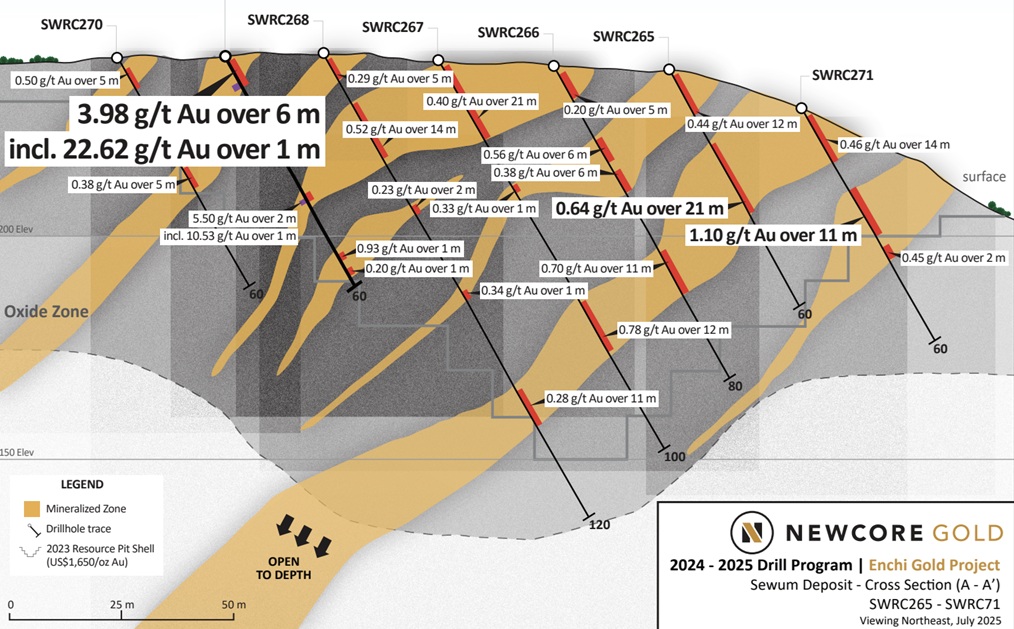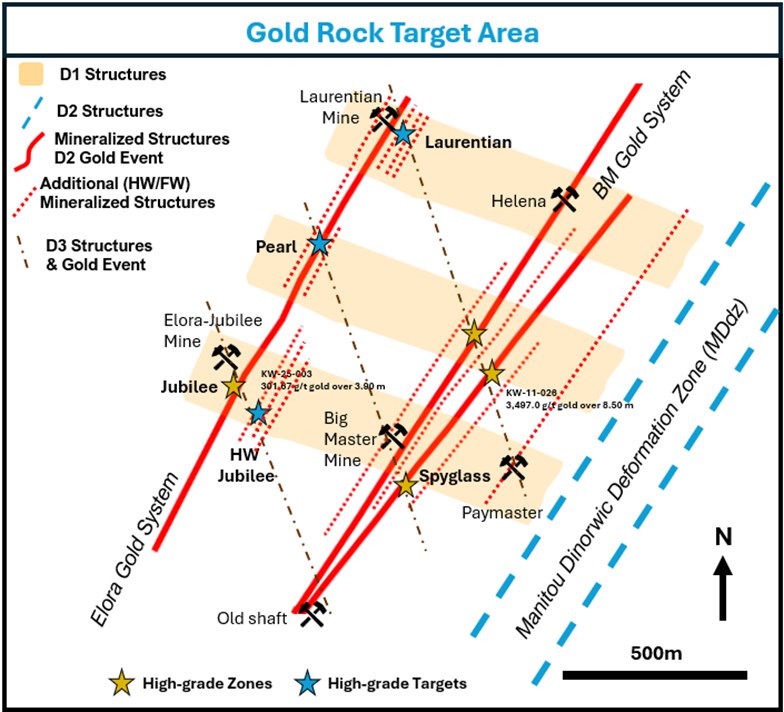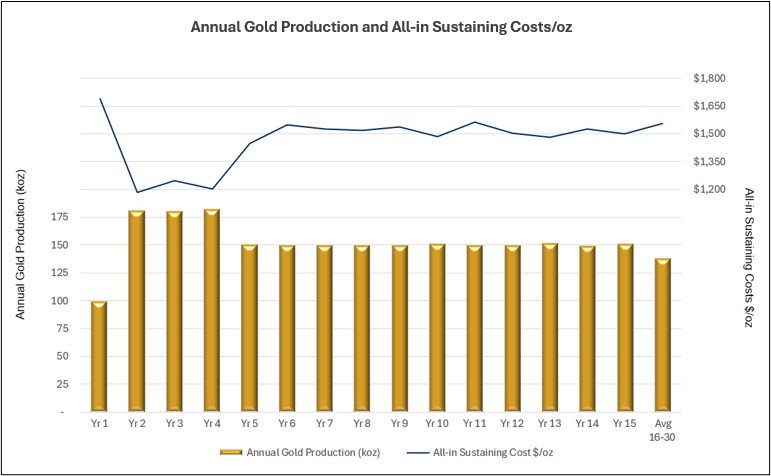Vancouver, British Columbia (FSCwire) - Asiamet Resources Limited ("ARS" or the “Company”) is pleased to advise that drilling has commenced testing the multiple high potential targets identified in the BK District.
Initial drilling is underway on the readily accessible BKZ prospect, a stand-alone high value polymetallic target, located less than 800 meters north of the Company’s feasibility stage BKM Copper deposit. A total five holes are planned and first assays are expected by end September. BKZ is the first of multiple copper and polymetallic Zn-Pb-Cu-Ag-Au targets to be drill tested over the coming months as feasibility studies are being completed at BKM. Access into drill targets at BKW and BKS is currently being prepared.
BK DISTRICT TARGETS
Priority drill targets in the BK district have been generated using a combination of geological mapping, rock/soil geochemical sampling and Induced Polarisation (“IP”) geophysics. Drilling at BKM in the past 2-3 years has clearly shown mineralisation is commonly associated with highly elevated copper in soil geochemistry co-incident with a well-defined near surface IP geophysics (chargeability) response. IP geophysics highlights mineralisation at BKM and identifies nearby targets for drilling at BKW (Figure 1), BKS and proximal to BKM. Unfortunately, the historical IP geophysical data does not cover the main copper in soil anomaly at BKW, however the last section line clearly shows a strong chargeability anomaly developing and provides confidence that further copper mineralisation could be encountered when drilling commences in the core of the BKW area.
Figure 1: BKW vs. BKM IP Chargeability anomalies in section view, which show a similar style signature.
BK DISTRICT RECENT MAPPING AND SAMPLING UPDATE
The Company recently completed mapping and sampling south of the proposed BKM open pit, as defined in the Preliminary Economic Assessment (“PEA”), to follow up a significant area of copper, zinc, lead, silver and gold mineralisation hosted in in sub-horizontal zones of massive sulphides (polymetallic) and a broad zone quartz stockwork veining (copper).
Sampling was conducted in the vicinity of two previous drill hole locations. The first was BK52-01(300.0m End of Hole “EOH”) which reported 14.9m @ 0.42% Zn and 0.14% Pb from 9m and 21m @ 0.23% copper from 87.2m (drilled in 2013) and where a rock chip sample collected from a large boulder nearby assayed 35.6% Zinc, 26.2% Lead, 2.94% Copper, 1.0g/t Gold and 3440g/t Silver (refer ARS Press Releases June 9, 2017). Recently conducted mapping and sampling confirm:
- Anomalous base and polymetallic mineralisation over an area measuring 350m by 200m.
- High grade polymetallic mineralisation with individual 1m rock channel intervals assaying up to 1.12g/t Au, 254g/t Ag, 0.63% Cu, 4.53% Pb and 9.78% Zn.
- Polymetallic mineralisation in this area displays similar characteristics to the BKZ polymetallic mineralisation and represents an attractive target located adjacent to the proposed BKM mine.
A second area of focus was in the vicinity of drill hole BK-12 (109.1m EOH), which intersected 48m @ 0.21% copper from 1.1m depth (drilled in 2011) and included 3m @ 2.25% Cu from 43.6m depth. Geologists recently collected rock chip grab and rock chip channel samples from altered and mineralised outcrops and confirmed:
- Anomalous base and polymetallic mineralisation over an area measuring 300m by 200m.
- Chalcocite, covellite and chalcopyrite mineralisation occurs in quartz stockwork veins cutting brecciated volcanic rocks and siliciclastics, with individual grab samples yielding up to 0.98% Cu. Two zones of continuous mineralisation in rock channel samples assayed 16m @ 0.60% Cu (including 2m @ 2.91% Cu).
- Copper mineralisation in and around BK12 shows similar characteristics to the mineralisation in the southern part of the BKM deposit, and will be drill tested as part of the company’s upcoming sterlilisation drilling for potential mine infrastructure.
These areas are shown on the project location map in Figure 2 and recent rock chip grab and channel sample assay results are summarised below in Table 1. Figure 3 shows polymetallic (left) and copper (right) mineralisation collected in the two areas noted above.
Table 1: Significant rock chip grab and channel sample results from recent mapping and sampling
| Area | Style | Type | From | To | Length | Au (g/t) |
Ag (g/t) |
Cu (%) |
Pb (%) |
Zn (%) |
| BK52 | Polymetallic | Channel | 0 | 1 | 1 | 1.12 | 254 | 0.63 | 4.53 | 9.78 |
| BK52 | Polymetallic | Channel | 0 | 3 | 3 | 0.21 | 39 | 0.73 | 0.06 | 1.23 |
| BK52 | Polymetallic | Channel | 6 | 12 | 6 | 0.19 | 34 | 0.32 | 0.26 | 0.80 |
| BK52 | Polymetallic | Grab | 0.17 | 13 | 0.04 | 0.71 | 1.71 | |||
| BK-12 | Copper | Channel | 0 | 16 | 16 | NSA | 5 | 0.60 | NSA | NSA |
| BK-12 | Copper | Channel | Including | 2 | NSA | 26 | 2.91 | NSA | 1.25 | |
| BK-12 | Copper | Channel | 0 | 6 | 6 | NSA | NSA | 0.22 | NSA | NSA |
Notes: Grade intercepts are calculated as a weighted average grade (uncut). NSA-No Significant Assay
True widths are interpreted to be between 80-100% of the reported lengths, unless otherwise stated.
-
Peter Bird, Asiamet’s Chief Executive Officer commented:
Having recently returned from a visit to the BKM Project site I can reaffirm that the potential for additional copper and polymetallic mineralisation within the KSK Contract of Work appears exceptional. As illustrated in Figure 3 of this release there are multiple occurrences of outcropping high grade mineralisation located outside of the current defined Resource envelope. The operational team is moving quickly to test the grade and continuity of the copper mineralisation, which if successful could have an immediate positive impact on what are already favourable economics as defined in the PEA.
With the recent capital raise being very well subscribed our corporate focus is clear. Advance the BKM Feasibility study to completion, simultaneously evaluate adjacent prospects with the potential to enhance the BKM PEA defined base case project, and continue to expand and assess the major Beutong Porphyry Cu-Au Project located in Sumatra.
As a result of our consistent strategy over the past three years Asiamet has established an enviable pipeline of advanced copper and high grade polymetallic (Zn-Pb-Cu-Ag-Au) exploration and development assets which are increasingly attracting broader market attention, as evidenced by the recent substantial investment in our Company by JP Morgan Asset Management. With a backdrop of rising gold and base metals prices and elevated project/exploration momentum the level of interest in Asiamet and its projects is rising strongly. We look forward to keeping all stakeholders updated as we simultaneously advance the BKM BFS and daylight the inherent value of our project pipeline through ongoing exploration and various corporate initiatives.
Figure 2: Location map showing copper in soil geochemistry over the Beruang Kanan project area, and the four main prospects BKM, BKW, BKS and BKZ. The A-B section line through BKW – BKM shows the correlation with the IP geophysics chargeability anomalies shown in Figure 1
Figure 3: Location map showing zinc in soil geochemistry over the Beruang Kanan project area, and the four main prospects BKM, BKW, BKS and BKZ. The A-B section line through BKW – BKM shows the correlation with the IP geophysics chargeability anomalies shown in Figure 1
Figure 4: (Left) BK52 area, massive sulphide Galena-Sphalerite mineralisation. (Right) BK12 area, quartz chalcocite-covellite stockwork veins in outcrop
Qualified Person
Data disclosed in this press release have been reviewed and verified by ARS’s qualified person, Stephen Hughes, P. Geo, Vice President Exploration of the Company and a Qualified Person within the meaning of NI 43-101 and for the purposes of the AIM Rules.





